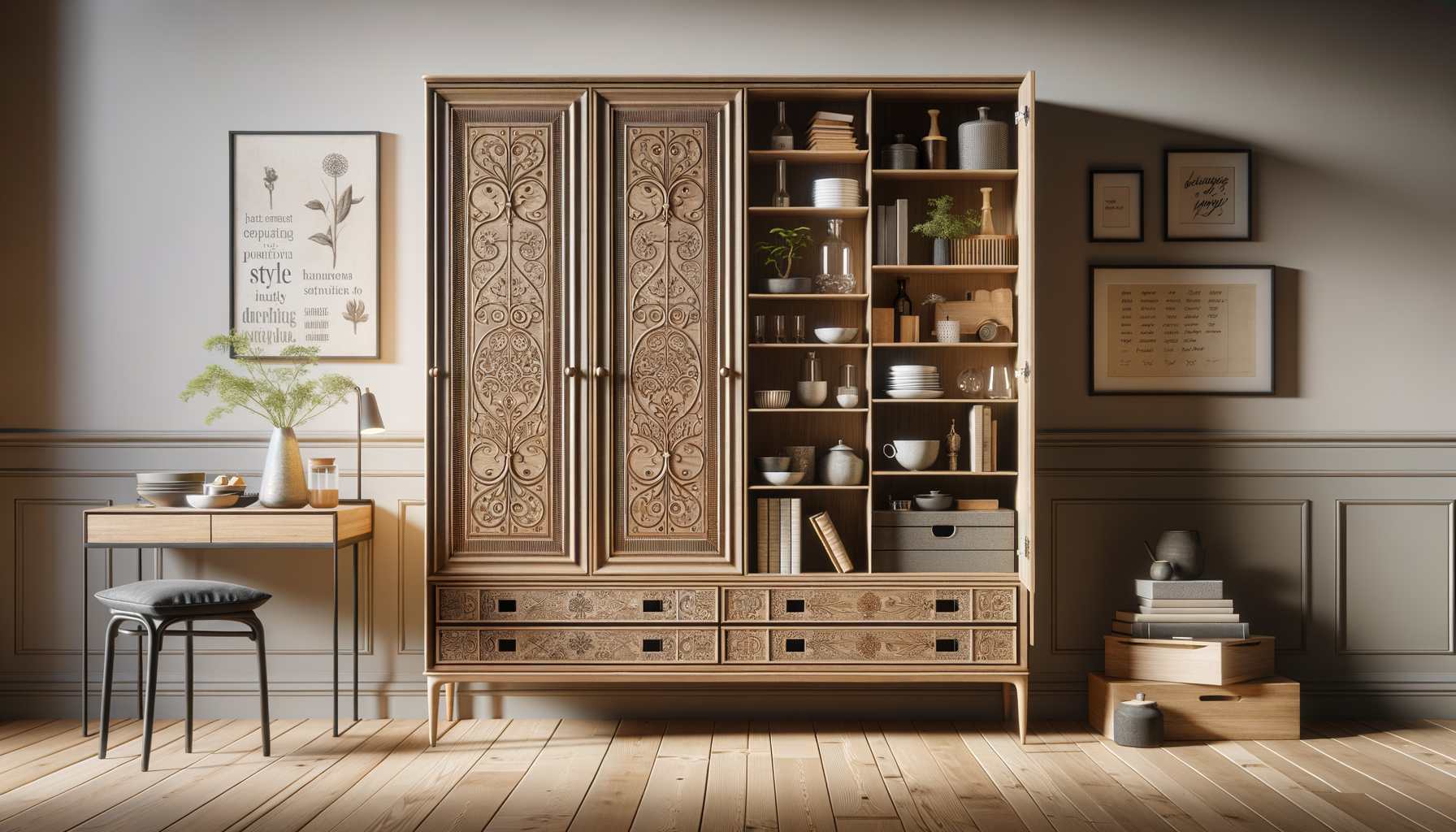Understanding the Role of Cabinets in Interior Design
Cabinets are more than just storage solutions; they are integral to the aesthetic and functional design of a space. Whether in kitchens, bathrooms, or living rooms, cabinets serve as a focal point that can define the style of a room. From sleek modern designs to rustic wooden finishes, the choice of cabinet style can set the tone for the entire space. Beyond aesthetics, cabinets provide essential storage, helping to keep spaces organized and clutter-free. This dual role makes them a critical component in interior design.
In the realm of interior design, cabinets are akin to the backbone of a space. They not only support the visual appeal but also enhance the usability of a room. For instance, in a kitchen, the layout and accessibility of cabinets can significantly affect cooking efficiency. Similarly, in a bathroom, well-placed cabinets can optimize space and improve functionality. Therefore, understanding the role of cabinets is essential for anyone looking to enhance their living areas.
The design and functionality of cabinets must align with the overall theme of the home. This involves careful consideration of material, color, and hardware. A cohesive look can be achieved by matching cabinet styles with other elements like countertops and flooring. Moreover, the functionality of cabinets should cater to the specific needs of the household, whether it’s maximizing storage in a small apartment or creating a luxurious feel in a spacious home.
Materials Matter: Choosing the Right Cabinet Construction
The material of a cabinet plays a crucial role in its durability, appearance, and cost. Common materials include solid wood, plywood, medium-density fiberboard (MDF), and particleboard. Each material has its pros and cons, making it important to choose based on the specific needs and budget of the project.
Solid wood is often preferred for its natural beauty and strength. It offers a classic look that can be stained or painted to match any decor. However, it can be more expensive and susceptible to changes in humidity. Plywood is a more affordable alternative that provides good strength and resistance to moisture, making it a popular choice for kitchen and bathroom cabinets.
MDF is another option that offers a smooth surface for painting and is resistant to warping. It is often used in modern designs but may not be as durable as solid wood or plywood. Particleboard is the most economical choice but is less durable and more prone to damage from moisture. When selecting cabinet materials, it’s important to balance aesthetics, durability, and budget to find the right fit for your home.
Designing for Functionality: Layout and Accessibility
Functionality is a key consideration in cabinet design, as it directly impacts the usability of a space. The layout of cabinets should facilitate easy access and efficient use of the space. In kitchens, this means placing frequently used items within reach and organizing storage to accommodate specific needs, such as pots, pans, and pantry items.
Accessibility is equally important in bathrooms and living spaces. Considerations such as the height of cabinets, the type of doors, and the use of pull-out shelves can enhance functionality. For instance, installing pull-out shelves in lower cabinets can make it easier to access items without having to bend down or reach deep into the back of the cabinet.
Incorporating ergonomic principles into cabinet design can improve user experience. This includes ensuring that cabinet doors open smoothly and that handles are easy to grip. Additionally, the use of soft-close hinges and slides can prevent slamming, prolonging the life of the cabinets and adding a touch of luxury. Ultimately, designing for functionality involves understanding the specific needs of the space and its users.
Embracing Style: Trends in Cabinet Design
Cabinet design trends are constantly evolving, reflecting changes in consumer preferences and technological advancements. One of the current trends is the use of bold colors and finishes, moving away from traditional wood tones to more vibrant and expressive hues. This trend allows homeowners to make a statement and personalize their spaces.
Another trend is the incorporation of open shelving, which adds a modern and airy feel to a room. Open shelves can be used to display decorative items, adding character and personality to the space. Additionally, the use of mixed materials, such as combining wood with metal or glass, is gaining popularity, offering a unique and customized look.
Minimalist designs with clean lines and handle-less doors are also in vogue, providing a sleek and contemporary appearance. This style is particularly popular in modern homes where simplicity and functionality are prioritized. Staying informed about cabinet design trends can inspire creativity and help homeowners create spaces that are both stylish and functional.
Making the Right Choice: Balancing Style and Function
When it comes to selecting cabinets, striking a balance between style and function is essential. While aesthetics are important, the functionality of cabinets should not be overlooked. A well-designed cabinet should not only complement the overall decor but also meet the practical needs of the household.
To achieve this balance, it’s important to consider the primary use of the space and the lifestyle of the occupants. For example, a family with young children may prioritize durability and safety features, while a couple may focus on elegance and luxury. Consulting with a professional designer can provide valuable insights and help navigate the myriad of options available.
Ultimately, the right choice of cabinets can enhance the beauty and functionality of a home. By carefully considering factors such as material, layout, and design trends, homeowners can create spaces that are both visually appealing and highly functional. This thoughtful approach ensures that cabinets serve as a valuable investment, adding both style and utility to any room.




Leave a Reply